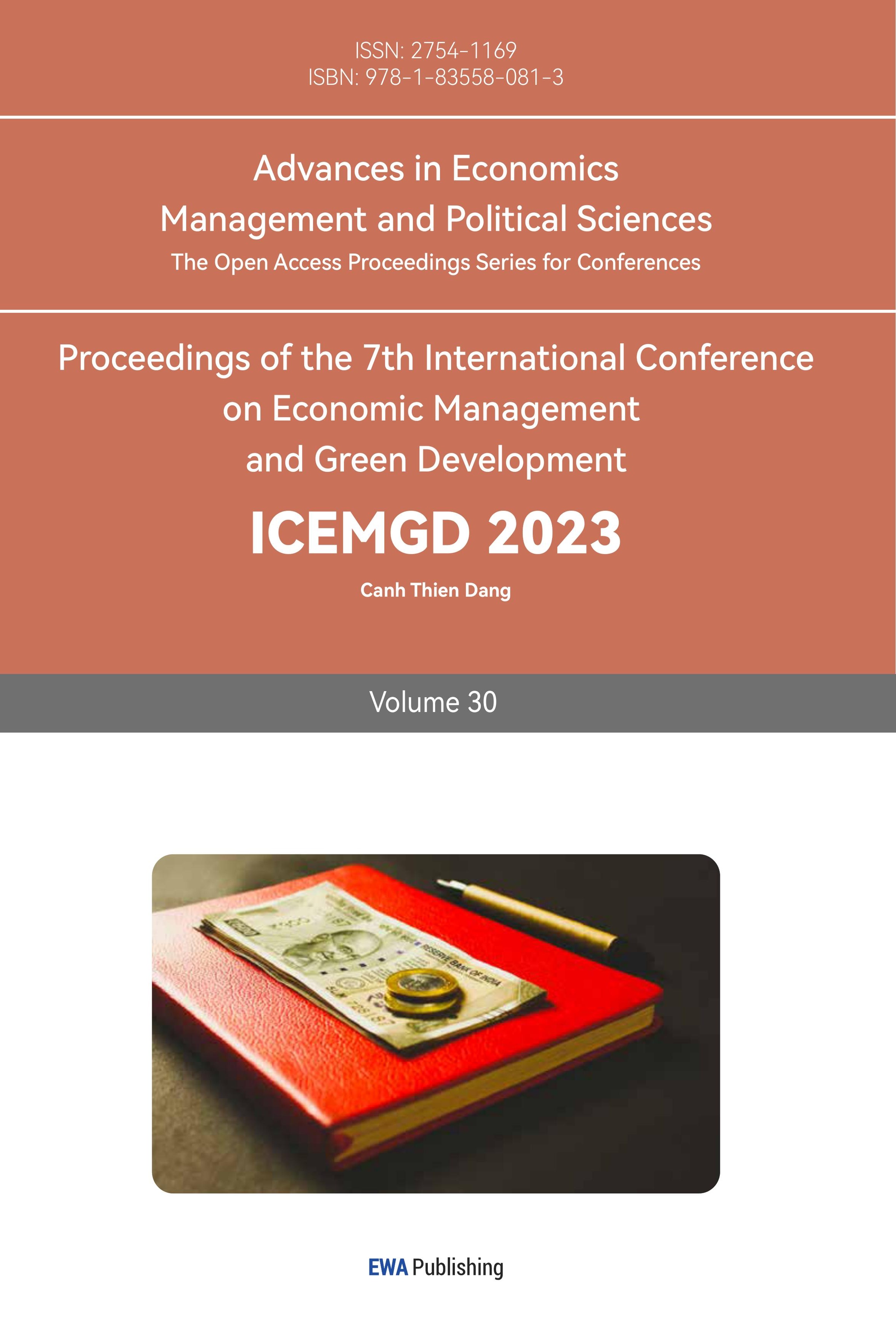References
[1]. Jiapei Zhang: The current situation of cost management in manufacturing enterprises and analysis of countermeasures. Business Watch (03),113-116 (2023).
[2]. Bojun Ge: An investigation on the method of using models to explain difficult points in finance teaching - taking zero-sum game as an example. Science and Technology Information (36), 111-112.1672-3791.2019.36.111. (2019).
[3]. Ning, Zhang: The Art of Win-Win - A Brief Discussion of Procurement Negotiation in the Procurement Process. Investment and Entrepreneurship (01), 223-225. (2022).
[4]. Qi Shen, Buhailiqieguli,Qiuheng Ruan: An analysis of communication and persuasion skills in business negotiation. International Public Relations (19), 77-79. 2022.19.042. (2022).
[5]. Aimin Sun: Exploring the opening strategy of business negotiation in international trade. Foreign trade and economics (03), 83-87 (2022).
[6]. Chongchong Wang: Techniques and application of offer in international business negotiation. Journal of Lanzhou Institute of Petrochemical Technology (02), 75-79(2021).
[7]. Manru Liu: The anchoring effect: Types of anchors and the influence of genes (Master's thesis, Southwest University). (2021).
[8]. Xiaobo Lv: Exploring how to create procurement benefits for enterprises in business negotiation work. Quality and Market (19), 133-135 (2022).
[9]. Tianxing Guo: Exploring the principles and techniques of dealing with business negotiation deadlock. China Collective Economy (16),76-77(2020).
[10]. Haixia Huang: An introduction to the skills and basic connotations of business negotiation. Business Watch (21), 81-84(2022).
Cite this article
Xue,X. (2023). Business Negotiation Strategies for Manufacturing Industries in Trade Activities. Advances in Economics, Management and Political Sciences,30,81-86.
Data availability
The datasets used and/or analyzed during the current study will be available from the authors upon reasonable request.
Disclaimer/Publisher's Note
The statements, opinions and data contained in all publications are solely those of the individual author(s) and contributor(s) and not of EWA Publishing and/or the editor(s). EWA Publishing and/or the editor(s) disclaim responsibility for any injury to people or property resulting from any ideas, methods, instructions or products referred to in the content.
About volume
Volume title: Proceedings of the 7th International Conference on Economic Management and Green Development
© 2024 by the author(s). Licensee EWA Publishing, Oxford, UK. This article is an open access article distributed under the terms and
conditions of the Creative Commons Attribution (CC BY) license. Authors who
publish this series agree to the following terms:
1. Authors retain copyright and grant the series right of first publication with the work simultaneously licensed under a Creative Commons
Attribution License that allows others to share the work with an acknowledgment of the work's authorship and initial publication in this
series.
2. Authors are able to enter into separate, additional contractual arrangements for the non-exclusive distribution of the series's published
version of the work (e.g., post it to an institutional repository or publish it in a book), with an acknowledgment of its initial
publication in this series.
3. Authors are permitted and encouraged to post their work online (e.g., in institutional repositories or on their website) prior to and
during the submission process, as it can lead to productive exchanges, as well as earlier and greater citation of published work (See
Open access policy for details).
References
[1]. Jiapei Zhang: The current situation of cost management in manufacturing enterprises and analysis of countermeasures. Business Watch (03),113-116 (2023).
[2]. Bojun Ge: An investigation on the method of using models to explain difficult points in finance teaching - taking zero-sum game as an example. Science and Technology Information (36), 111-112.1672-3791.2019.36.111. (2019).
[3]. Ning, Zhang: The Art of Win-Win - A Brief Discussion of Procurement Negotiation in the Procurement Process. Investment and Entrepreneurship (01), 223-225. (2022).
[4]. Qi Shen, Buhailiqieguli,Qiuheng Ruan: An analysis of communication and persuasion skills in business negotiation. International Public Relations (19), 77-79. 2022.19.042. (2022).
[5]. Aimin Sun: Exploring the opening strategy of business negotiation in international trade. Foreign trade and economics (03), 83-87 (2022).
[6]. Chongchong Wang: Techniques and application of offer in international business negotiation. Journal of Lanzhou Institute of Petrochemical Technology (02), 75-79(2021).
[7]. Manru Liu: The anchoring effect: Types of anchors and the influence of genes (Master's thesis, Southwest University). (2021).
[8]. Xiaobo Lv: Exploring how to create procurement benefits for enterprises in business negotiation work. Quality and Market (19), 133-135 (2022).
[9]. Tianxing Guo: Exploring the principles and techniques of dealing with business negotiation deadlock. China Collective Economy (16),76-77(2020).
[10]. Haixia Huang: An introduction to the skills and basic connotations of business negotiation. Business Watch (21), 81-84(2022).









